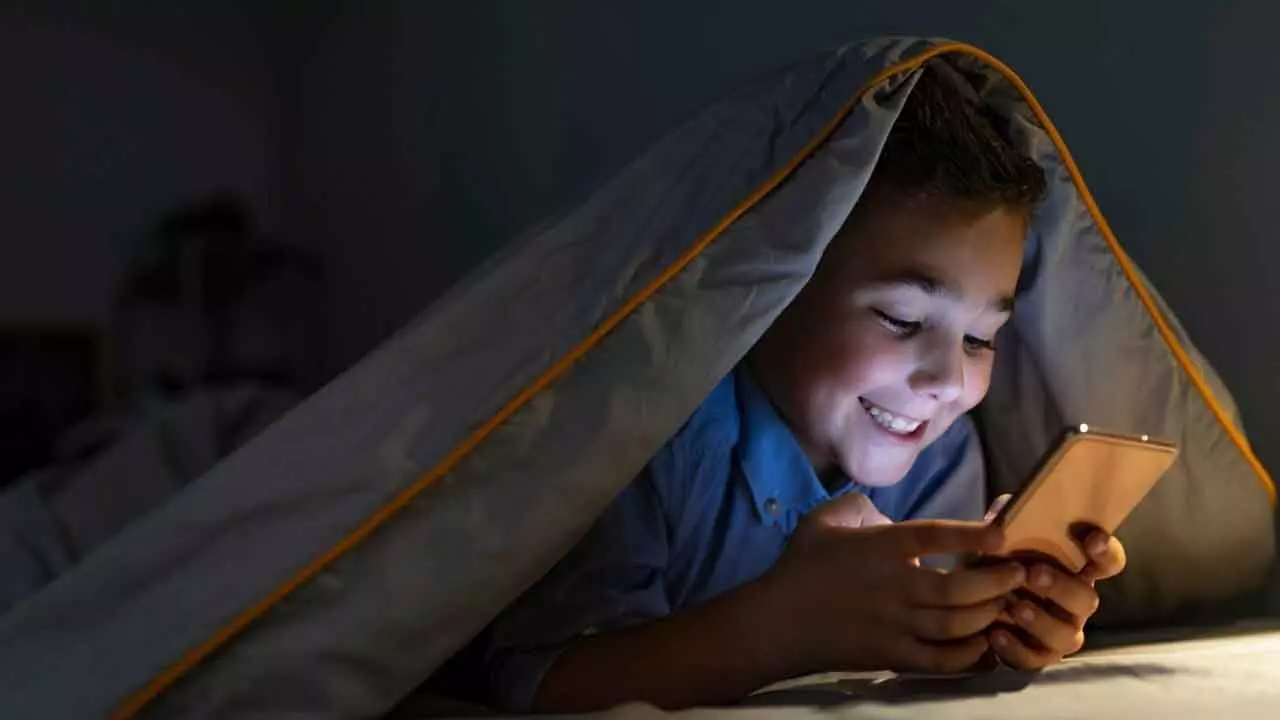Live
- PM Modi Visits Indian Labour Camp And Engages With Diaspora In Kuwait
- South Korea: Main opposition urges acting president to sign special counsel bills or face consequences
- Central PSUs record 47 per cent jump in net profit for 2023-24, market cap doubles
- Man In Madhya Pradesh Dies By Suicide, Leaves Video Alleging Harassment
- AAP Likely To Replace Shoaib Iqbal With Son Aaley Muhammad Iqbal For Matia Mahal Seat
- Multi-Storey Building Collapse In Mohali Triggers Massive Rescue Operation
- Anti-Corruption Officers Assaulted By Revenue Clerks In Uttar Pradesh
- Earthquake tremors felt again in Prakasam district
- G Trisha, spinners star as India win inaugural U19 Women’s Asia Cup title
- Security Forces Arrest Two Terrorist Associates In North Kashmir's Sopore
Just In

With children spending increasing hours on digital devices, myopia rates are climbing rapidly. Experts stress that early intervention and a balanced...
With children spending increasing hours on digital devices, myopia rates are climbing rapidly. Experts stress that early intervention and a balanced approach to screen time can protect young eyes, while advancements in diagnostic tools and specialized lenses provide new solutions to manage and slow myopia progression
The widespread use of digital gadgets in today’s technologically advanced world has revolutionized the way we work, learn, and communicate. A study based on the prediction model for 2050, reveals a steady rise in myopia among urban children aged 5 to 15, with rates climbing from around 4.5% in 1999 to 21.15% in 2019. Basis the upward trajectory, it can be established that the myopia prevalence is projected to reach 48.14% by 2050.
Without any proactive measures or lifestyle modifications, the overall prevalence of myopia across all age groups is expected to grow by 10.53% in the next 30 years. The pattern reflects the current scenario in East Asia Pacific and highlights the alarming need to address the myopia crisis in India.
As medical professionals, we observe firsthand how technology is transforming the approach to managing myopia - from early detection using sophisticated diagnostic tools to innovative interventions that can slow the progression of the condition. This shift offers new hope in safeguarding the vision of future generations. Lets understand what causes Myopia and how is technology can curb Myopia progression.
How does screen time impact eye health of children?
Spending too much time on screens or other digi tal gadgets is perhaps the most common worry parents have these days about the vision of their kids. As healthcare professionals we recognize that using these gadgets for extended periods of time at close range increases the chance of developing myopia. There are strong correlations between digital screen time and myopia, according to recent research.
Myopia at preschool age is more common in children who have been exposed to screens before the age of three. A growing body of evidence suggests that screen usage contributes to the development of myopia in kids and teens, with the worst effects appearing to occur in kids under 10 at this critical juncture in their visual development.
Increased screen time amongst kids and teenagers has also been connected to the development of digital eyestrain and dry eyes, which can result in serious symptoms like headaches, blurred vision, and red eyes.
Vision rules that can be followed at home:
Three fundamental guidelines apply to the visual world of children during their early years. These guidelines are critical in lowering the likelihood that a child would develop myopia and in lowering the likelihood that their existing myopia will worsen quickly.
♦ The elbow rule states that you should keep books and screens at least elbow-to-hand distance away from your eyes to prevent eye strain
♦ The 20/20 rule states that reading should be broken up into regular pauses to lessen the strain on the eyes
♦ The two-hour rule states that children of school age should only spend two hours a day using screens for leisure (apart from schoolwork).
What are the solutions available to manage myopia?
It is always important to remember that frequent outdoor activities and a decrease in near work are beneficial for eye growth when managing myopia or progressive myopia.
Further, specialized lenses have been proven effective in slowing down the myopia progression in children. Lenses is backed by innovation and more than a decade of experience in developing lenses to manage myopia progression. The lenses feature advanced technology that manages accommodative condition that occurs during near-vision tasks and contributes to myopia progression. The lenses offer clear vision across all distances while also helping to slow the development of myopia.
Technological developments have also revolutionized myopia diagnosis and treatment. High-resolution imaging techniques, allow eye care providers to properly assess and monitor the progression of myopia, enabling timely interventions and tailored treatment programs. In my opinion, early detection during the childhood and teenage years helps avoid additional damage to the eyes. Many parents are concerned about their children’s screen usage due to the rise in childhood myopia rates. I always recommend that changing one’s lifestyle and getting frequent eye exams are the keys to preventing myopia and reducing its growth. By acting early, one can curb the long-term complications of high myopia and ensure that a child can enjoy a clear vision and a brighter future.
(The writer is a Founder, Grewal Eye Institute, Chandigarh)

© 2024 Hyderabad Media House Limited/The Hans India. All rights reserved. Powered by hocalwire.com







